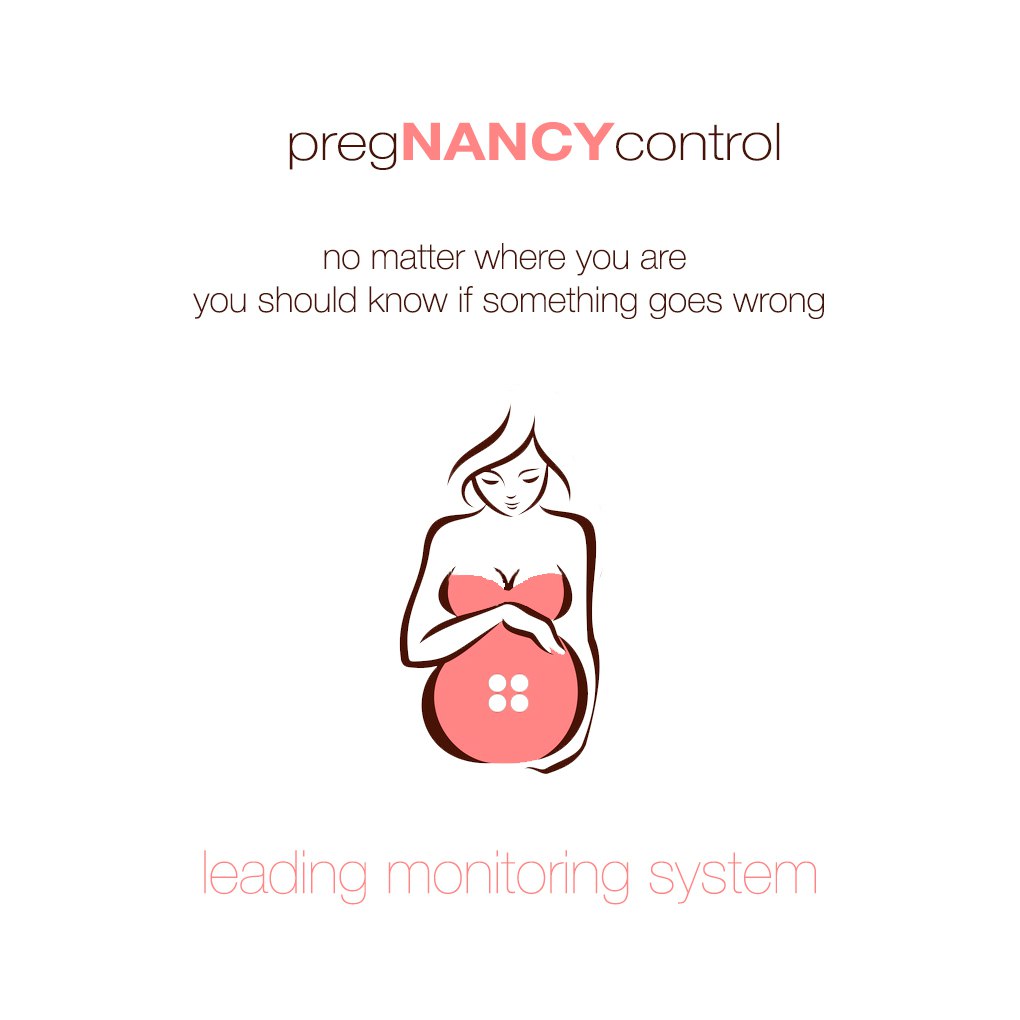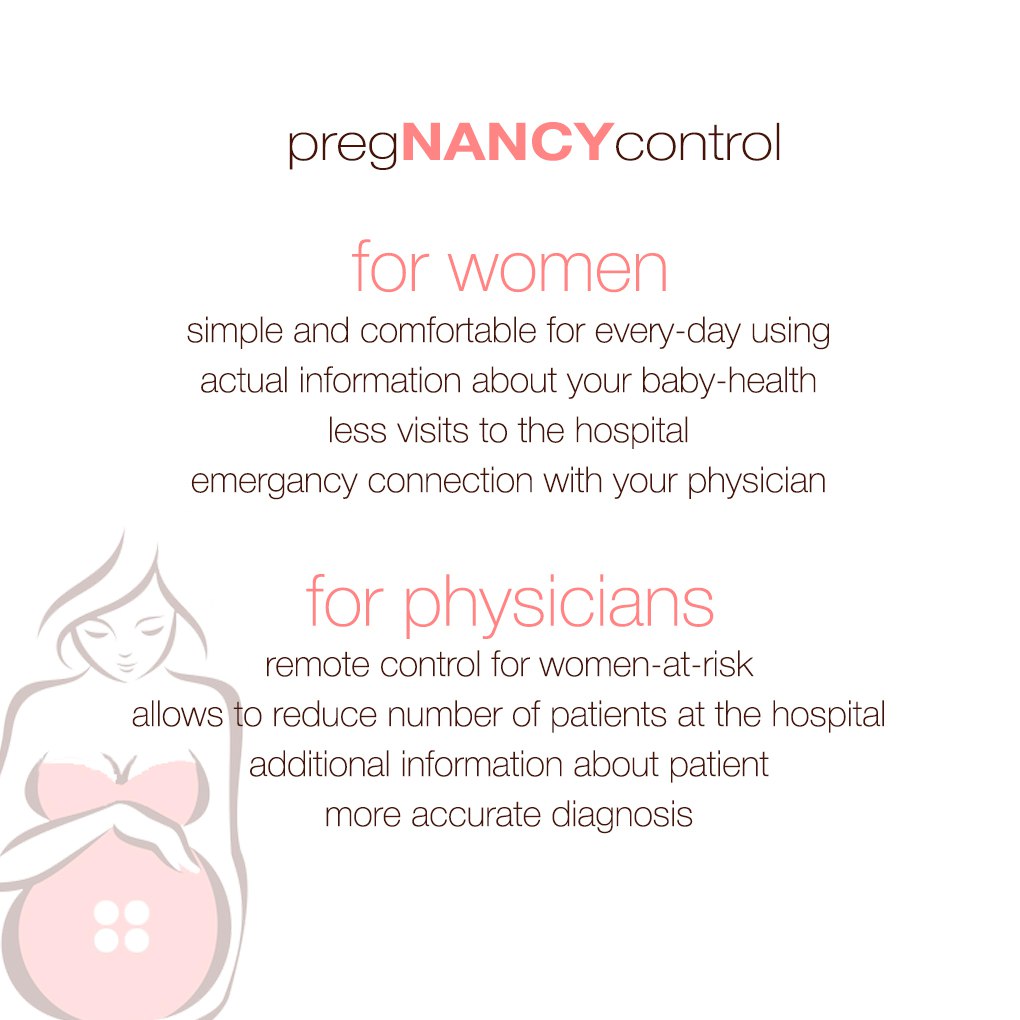Mom wants grandchildren! Or where telemedicine may be useful

The other day in Russia was to adopt a telemedicine bill, which means that from January 1, 2018, doctors will be able to interact with patients remotely (collect a history before face-to-face reception, advise after. Face-to-face diagnosis will still be required), from 2019 - write out electronic recipes (even containing narcotic substances, i.e. the whole range of drugs).
We, the young and ambitious graduate students of the department of biotechnical systems, happily scratch our hands. Doctors - they thoughtfully scratch their heads and do not understand why they need it with an already large flow of patients. There are more questions than answers, but today we want to share with Habravians our ideas on the project of remote monitoring of the health status of the fetus and mother and, perhaps, misunderstandings about the benefits of the word with a capital "T" will be less.
Background: at the moment, any medical activity can be carried out only internally, using the available examination protocols, documentation - in paper form. If you are using a computer with electronic cards, it is still printing and stitching. Consultations of the doctor by phone, Yandex.Health service and so on. - are not a medical activity with all the consequences. Therefore, a visit to the doctor or his arrival home is the only option to get medical help and advice in a legal way.
January 1, 2018, all somewhat simplified.
Imagine. You, or your girlfriend / wife / girl downstairs, carry a beautiful baby in you. Wonderful morning, tasty breakfast and sudden strong cramps in the lower abdomen strongly up to term. The lady calls an ambulance and takes her to the hospital for additional examinations. Examined. In general, everything is normal, there are no obvious pathologies, but the doctor is worried about something. Then there are two options: at your own risk (or because there are no places in the hospital) to let the pregnant woman go home, maybe nothing will happen; or put on the save and observe in the hospital how much is required (and this can be both weeks and months).
')
Now imagine that a doctor can, with peace of mind, release a bed in the hospital and monitor the patient's condition remotely. She will drink tea at home, iron her shirt, walk around the nearest park, and the data on vital signs all the time will be recorded by a small device on her stomach. Several electrodes for recording mother and fetal ECG, a clip for measuring blood oxygen saturation, accelerometers for activity tracking and respiration sensors. No traditional cardiotocography and ultrasound, the safety of which is still in doubt.

In case of compliance with the norm, the device silently records and does not disturb anyone ( green level ). Via smartphone transmits to the cloud when there is Wi-fi or normal mobile communication. As soon as something starts to change, an alarm is generated ( Alarm ). It can be yellow and red levels .
Let's give an example. The future mother lives on the 7th floor and decided to walk. Pulse took off, saturation (percentage of oxygen in the blood) fell. The device “blunders” and will give information prompts that it is better to lie down to rest as soon as possible, and also to connect additional channels for analysis in the “enhanced” mode, in order to track the normalization of the condition.
But if the future mother is lying, she does not show bright physical activity, and her pulse has changed dramatically (from her or from the fetus), and the saturation is still creeping critical - something is clearly wrong, you need to urgently call a doctor. And it is here that the operative formation of a data packet about the patient's condition comes into operation, the wearable device connects with the patient's smartphone and sends information about the current state of the patient to the attending physician. He opens it on his phone and is already making decisions about further actions - whether urgent help and emergency calls are needed, or not.
Thus, the doctor receives information only in emergency situations. At the same time, he can also view, at a convenient time for him, data on all patients from his smartphone or computer. And during the on-site visit, look at all the available records, analyze the dynamics and evaluate the course of pregnancy. Boring functional system diagram below.

Pregnant while quietly lives at home. Under the supervision of a physician. It does not run on the LCD, how much in vain, does not lie in the hospital. Beauty.
BUT
Of course, there are thousands and one problem. The main - the removal of high-quality signals. This is very difficult, believe me. Clothes rustling on electrodes, their hands are scratched and so on. But there is hope for a sufficiently adequate meal, Holter monitors are working. The protection of personal data goes to the stack of “problems”. The new bill also says this. Lack of money, time and full-fledged team, unfortunately, in the same pile.
As for analogues. Many similar ideas have already been implemented , of course, but most are at the level of working prototypes and with registration and analysis only of the fetal ECG. And without contact with the doctor. And without prompt detection of pathologies. Really fashionable thing - Monica fetal ECG monitor , but it is applicable only in the hospital. The radius of the "range" - the room, data transmission from the wearable device goes to the stationary unit via Bluetooth.
It seems that the flow of gadgets for medicine and so huge, but now it is 90% of toys like fitness trackers. So the wave of new, “truly medical”, surveillance devices for various diseases is near. We want to bring the project to mind. Moreover, very soon this kind of observation will already become a medical activity, which means it will allow diagnosing and treating pathologies in the early stages. This is certainly inspiring.
If you have any comments, thoughts or desires regarding the development of the project - we will be only happy!
Source: https://habr.com/ru/post/334128/
All Articles